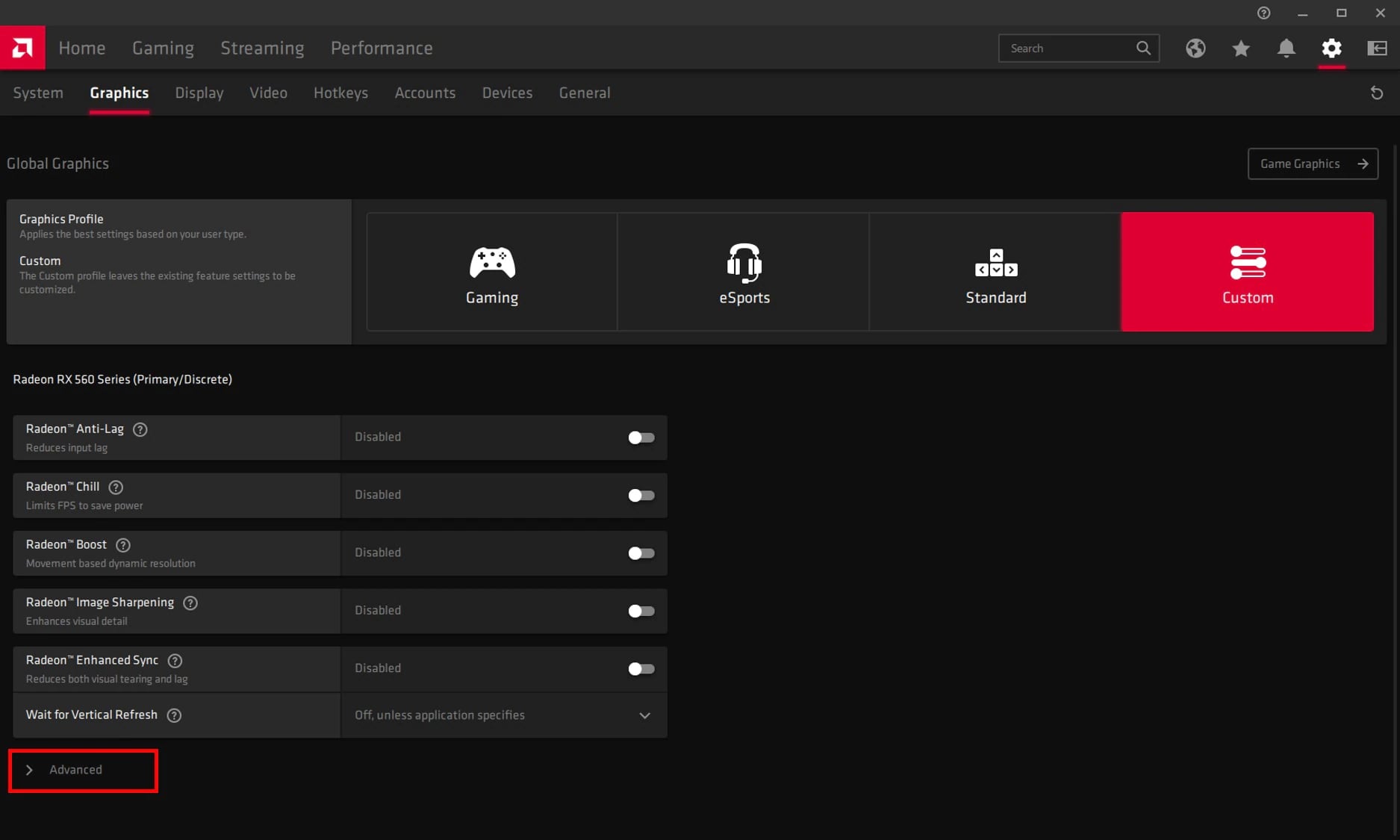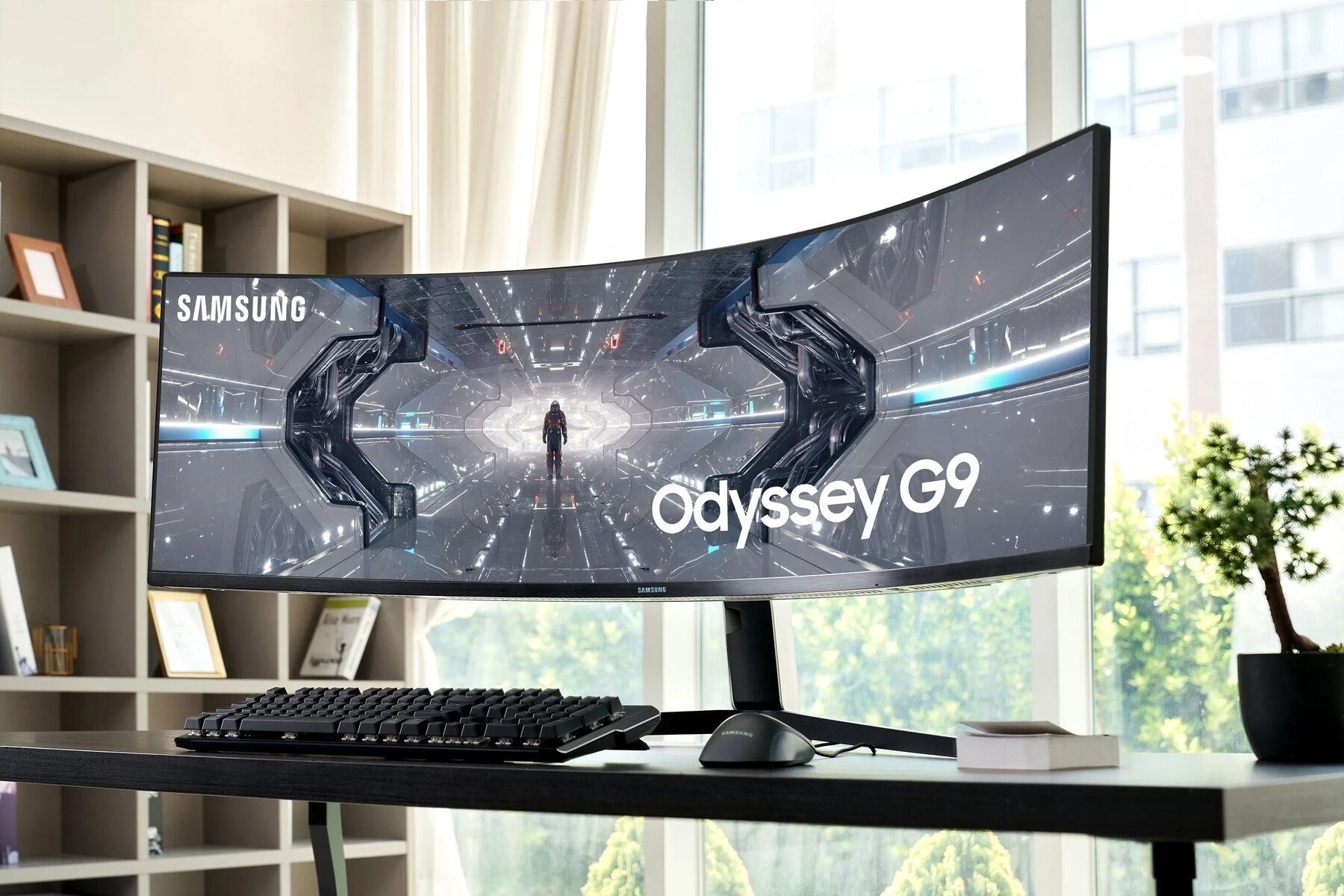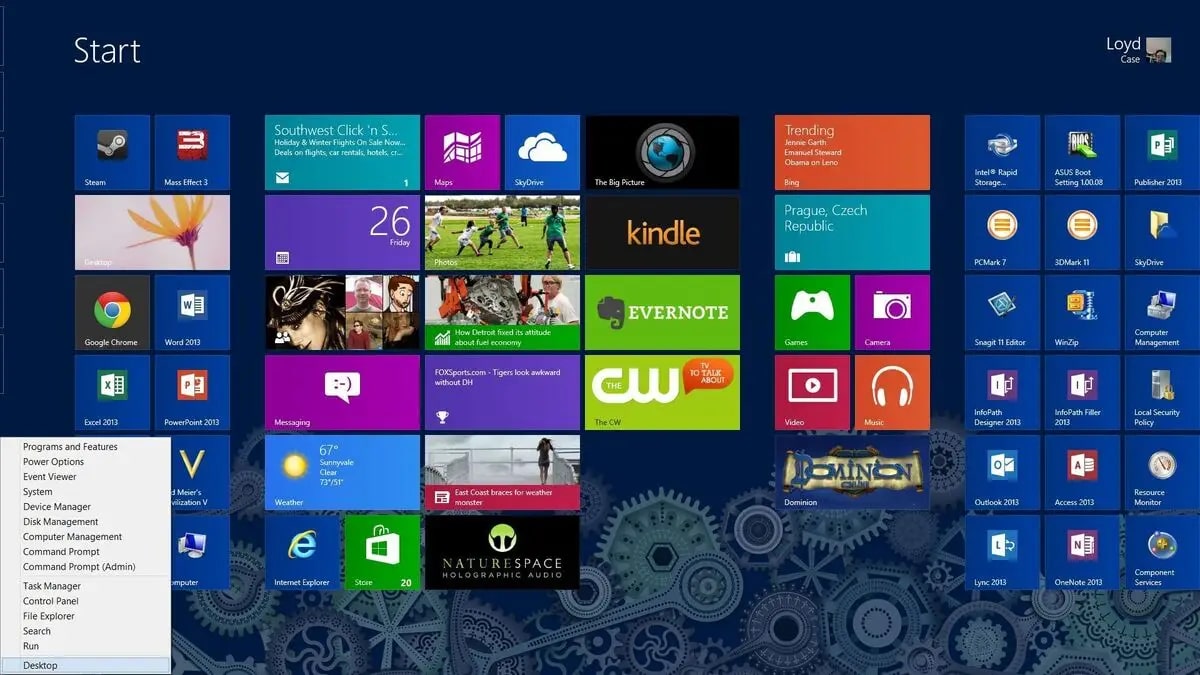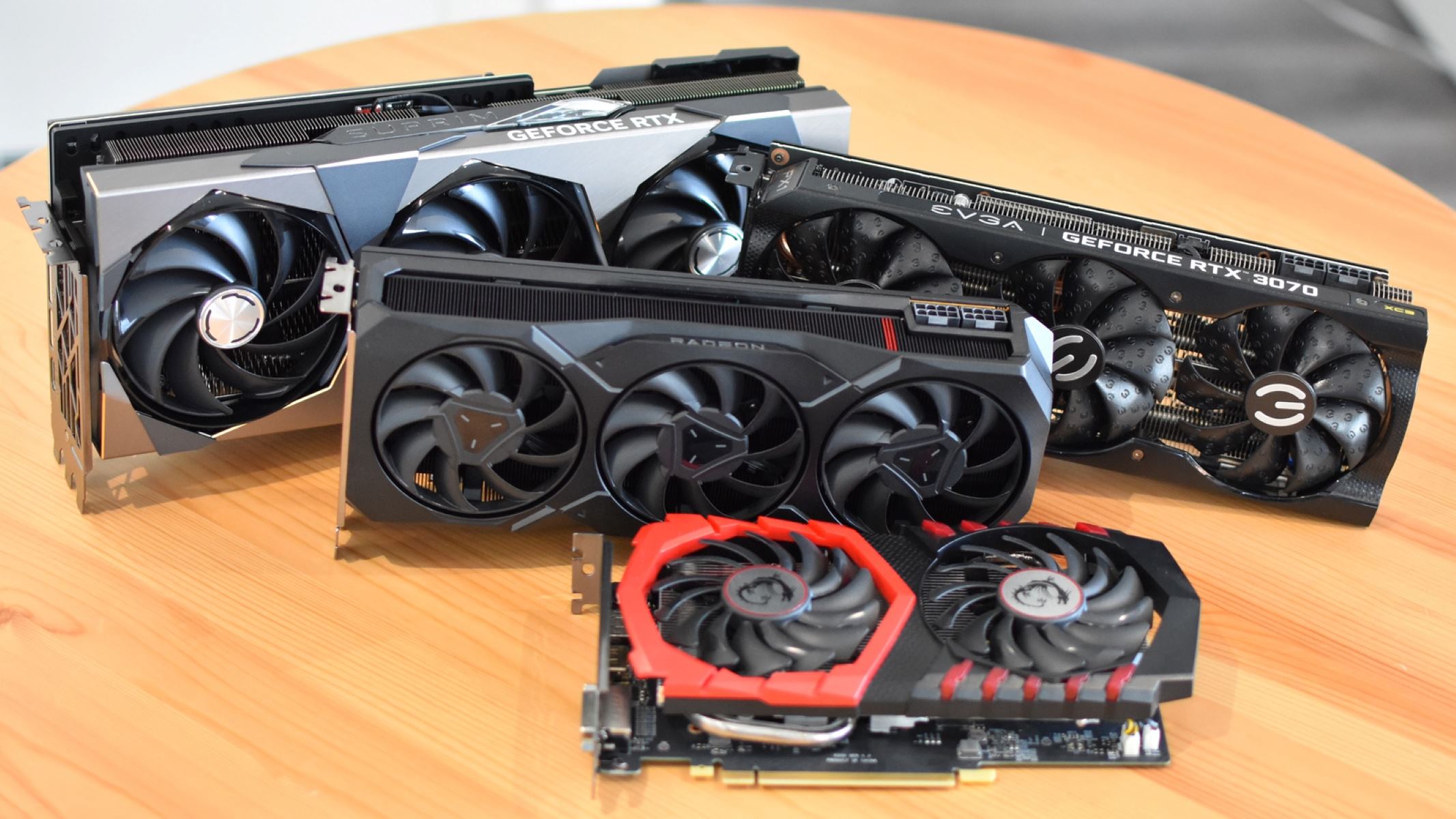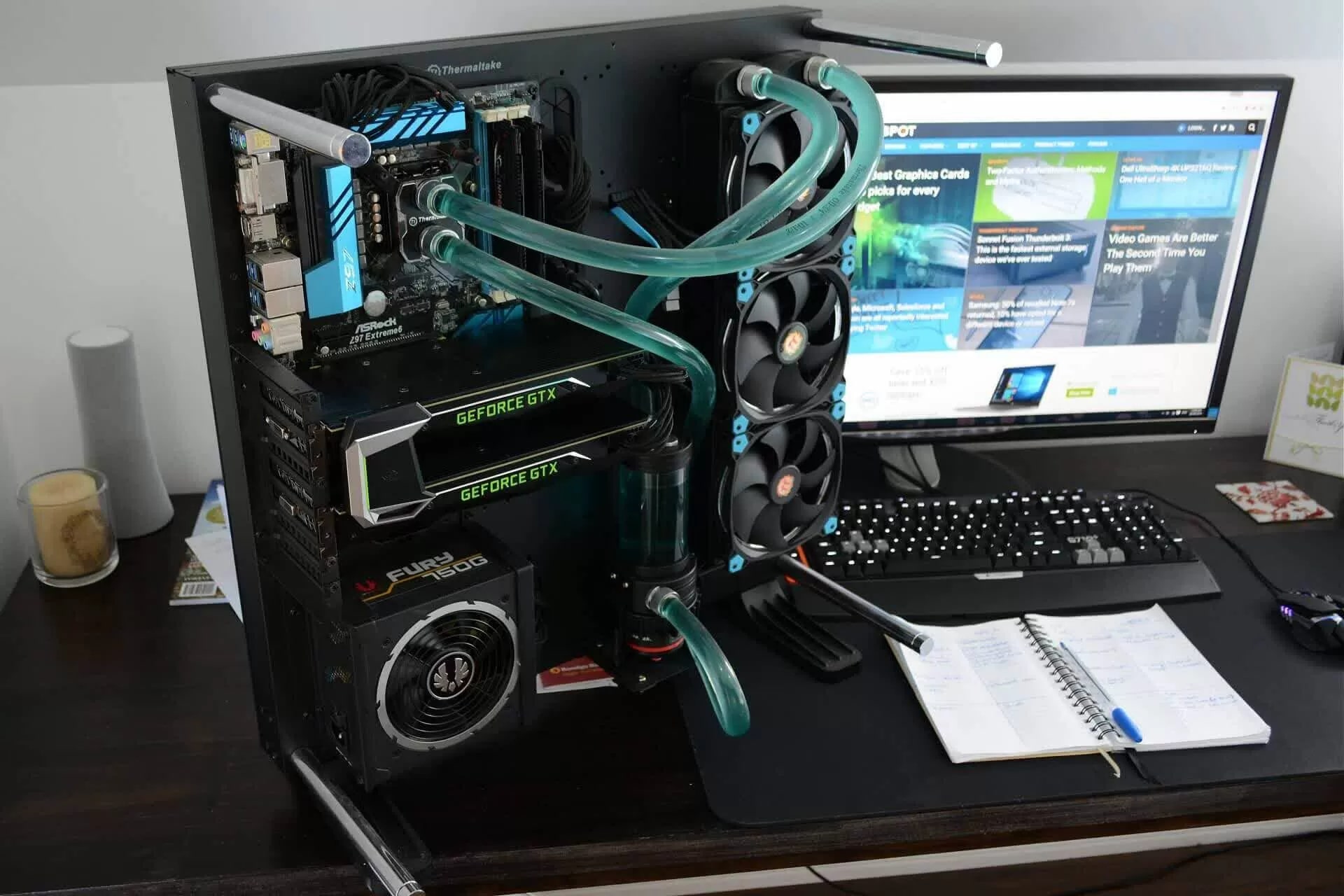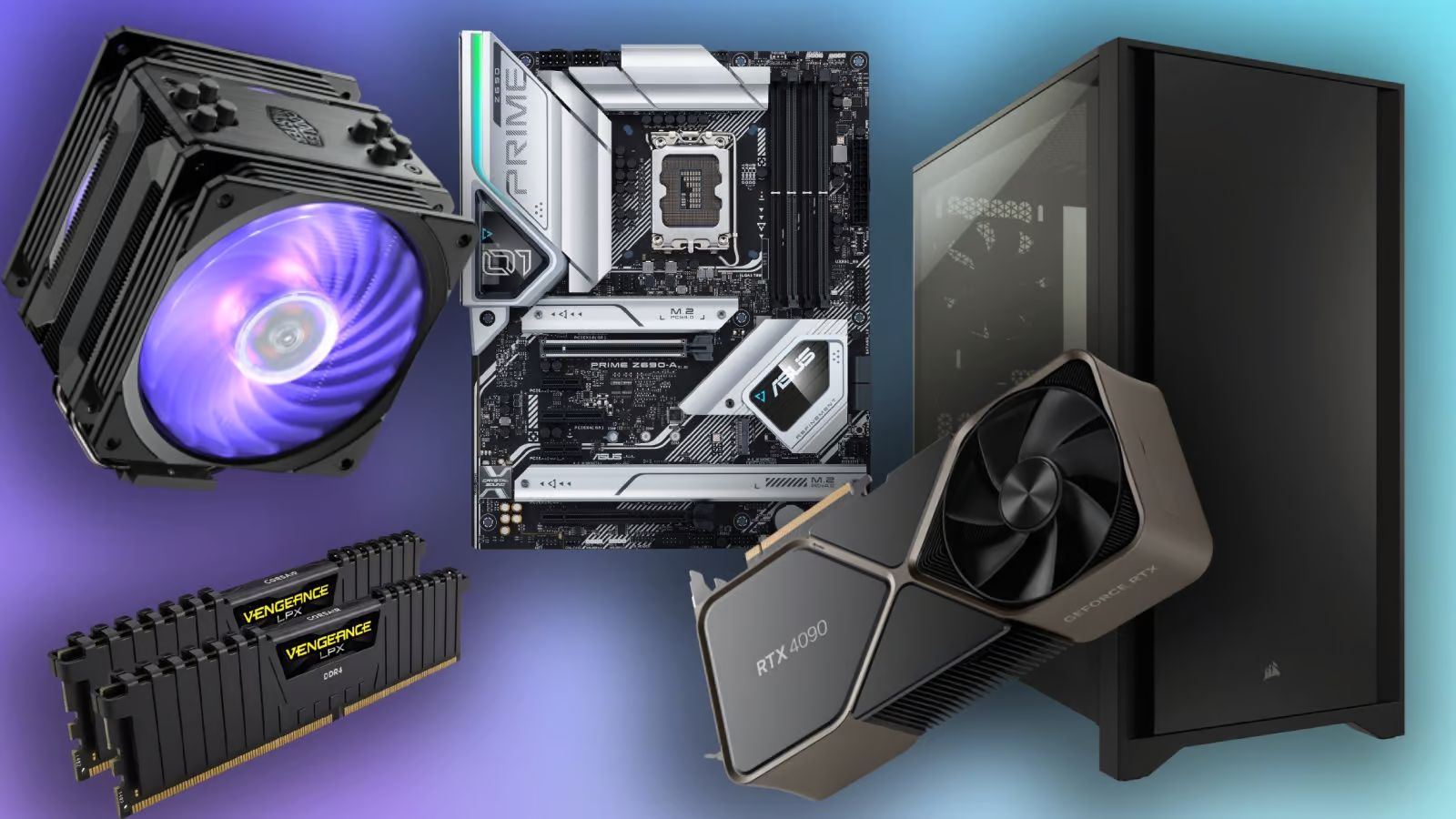Introduction
Are you ready to unlock the full potential of your AMD graphics card? Whether you’re a hardcore gamer, a video editor, or simply someone who wants to experience improved graphics performance on your computer, turning on your AMD graphics card is the first step. By enabling your AMD graphics card, you can enjoy faster rendering speeds, enhanced visual effects, and smoother gameplay.
While the process may seem daunting at first, fear not! In this guide, we will walk you through the steps to enable your AMD graphics card and make it your default graphics option. With just a few adjustments, you’ll be on your way to a more immersive and visually stunning experience.
Before we dive into the steps, it’s important to ensure that your system is compatible with an AMD graphics card. Check your computer’s specifications or consult the manufacturer’s documentation to confirm that your hardware supports AMD graphics card installation. Once you’ve confirmed compatibility, you’re ready to begin the process of enabling your AMD graphics card.
Step 1: Check System Compatibility
The first step in turning on your AMD graphics card is to check if your system is compatible with it. AMD graphics cards require specific hardware and software compatibility to function properly. Here’s what you need to do:
- Check your system specifications: Start by checking your computer’s specifications to ensure that it meets the requirements for an AMD graphics card. Look for information such as the processor, RAM, and the available PCIe slot for graphics card installation.
- Verify the power supply: AMD graphics cards often require a dedicated power connection from the power supply unit (PSU). Make sure your power supply has the necessary connectors and wattage to support the graphics card. Refer to the card’s documentation or the AMD website for specific power supply requirements.
- Consider the operating system: Ensure that your operating system is compatible with the AMD drivers. Visit the AMD website to check for driver compatibility and download the appropriate drivers for your operating system.
By verifying the compatibility of your system, you can ensure a smooth installation process and avoid any compatibility issues down the line. If you discover that your system is not compatible with an AMD graphics card, you may need to consider upgrading certain components or exploring alternative graphics card options.
Step 2: Update Drivers
Once you’ve confirmed the compatibility of your system, the next step is to update the drivers for your AMD graphics card. Drivers act as the intermediaries between your graphics card and the operating system, allowing them to communicate effectively. Here’s how you can update your AMD graphics card drivers:
- Identify your graphics card model: Before updating the drivers, determine the exact model of your AMD graphics card. You can find this information in the Device Manager or by using third-party software such as GPU-Z.
- Visit the AMD website: Go to the official AMD website (www.amd.com) and navigate to the “Drivers & Support” section. Make sure to select the appropriate operating system and graphics card model.
- Download and install the latest drivers: Look for the latest driver version available for your AMD graphics card and download it. Follow the on-screen instructions to install the drivers. It is recommended to choose the “Express” or “Automatic” installation option for a hassle-free experience.
- Restart your computer: After the installation is complete, restart your computer to ensure that the driver changes take effect.
Updating your AMD graphics card drivers ensures that you have the latest bug fixes, performance enhancements, and compatibility improvements. It is a crucial step to optimize your system’s graphics capabilities and unlock the full potential of your AMD graphics card.
Additionally, it’s a good practice to periodically check for driver updates on the AMD website and install them when available. This helps to keep your graphics card running smoothly and ensures compatibility with the latest software and games.
Step 3: Enable AMD Graphics Card in Device Manager
After updating your drivers, the next step is to enable your AMD graphics card in the Device Manager. This ensures that your computer recognizes and utilizes the graphics card effectively. Here’s how you can enable your AMD graphics card in the Device Manager:
- Open Device Manager: Right-click on the Start button and select “Device Manager” from the menu. Alternatively, you can press the Windows key + X and choose “Device Manager” from the list.
- Expand the Display Adapters category: In the Device Manager window, locate and expand the “Display Adapters” category. You should see your AMD graphics card listed here.
- Enable the AMD graphics card: Right-click on your AMD graphics card and select “Enable Device” from the context menu. If the option is already grayed out, it means that your graphics card is already enabled.
Enabling your AMD graphics card in the Device Manager ensures that it is active and ready to be used by your computer. If you’re experiencing issues with graphics performance or if your AMD graphics card is not being recognized, this step can help resolve those problems.
In some cases, you may find multiple graphics cards listed in the Device Manager, especially if your system has integrated graphics alongside the AMD graphics card. To ensure that your AMD graphics card is being utilized as the primary graphics option, you can set it as the default graphics device in the next step.
Step 4: Set AMD Graphics Card as Default
Setting your AMD graphics card as the default device ensures that it is prioritized for graphics processing and rendering. By making it the default graphics option, you can maximize its performance and take advantage of its capabilities. Here’s how you can set your AMD graphics card as the default device:
- Open the AMD Radeon Settings: Right-click on your desktop and select “AMD Radeon Settings” from the context menu. This will open the AMD control panel.
- Navigate to the Display tab: In the AMD Radeon Settings window, click on the “Display” tab located at the top of the window.
- Choose the AMD graphics card as the default device: Under the “Display” tab, you will see a list of connected displays. Select the display connected to your AMD graphics card and click on the “Set as Default Device” button.
Setting your AMD graphics card as the default device ensures that it takes precedence over any other graphics options in your system. This means that all graphics-intensive tasks, such as gaming or video editing, will be handled by the AMD graphics card, resulting in improved performance and smoother visuals.
It’s worth mentioning that some applications or games may have their own graphics settings that override the system defaults. In such cases, you may need to adjust the graphics settings within the application or game to utilize the AMD graphics card specifically.
By following these steps and setting your AMD graphics card as the default device, you can fully harness its power and experience enhanced graphics performance across various applications and games.
Step 5: Adjust Graphics Card Settings
Now that you have enabled your AMD graphics card and set it as the default device, it’s time to fine-tune the settings to optimize its performance according to your preferences. Adjusting the graphics card settings allows you to customize various aspects, such as image quality, display resolution, and performance. Here’s how you can adjust your AMD graphics card settings:
- Open the AMD Radeon Settings: Right-click on your desktop and select “AMD Radeon Settings” from the context menu to open the AMD control panel.
- Explore the available options: Within the AMD Radeon Settings, you will find various tabs such as Gaming, Display, and Video. Each tab offers different settings for you to customize according to your needs.
- Adjust gaming settings: In the Gaming tab, you can configure settings specific to gaming, such as frame rate control, anti-aliasing, and texture filtering. These settings can enhance your gaming experience and help achieve a balance between performance and visual quality.
- Optimize display settings: Under the Display tab, you can adjust settings related to display resolution, refresh rate, and color calibration. Tweak these settings to match your monitor’s capabilities and personal preferences for a more vibrant and accurate visual experience.
- Manage power settings: The AMD Radeon Settings also provide options to control the power usage of your graphics card. You can choose between performance-oriented settings for maximum power and efficiency settings for reduced power consumption.
By adjusting the graphics card settings, you can tailor the performance and visual quality of your AMD graphics card to meet your specific requirements. Experiment with different settings to find the optimal balance between performance and visuals that suits your needs.
Keep in mind that not all settings may be applicable or available for every AMD graphics card model. The options and features presented in the AMD Radeon Settings may vary depending on your hardware and driver version.
Once you have customized the graphics card settings to your liking, you’re all set to enjoy an enhanced visual experience across your favorite applications and games.
Step 6: Troubleshooting Common Issues
Sometimes, you may encounter certain issues while enabling or configuring your AMD graphics card. Don’t worry! In this step, we will discuss common issues and provide troubleshooting tips to help you resolve them effectively. Here are some common issues and their potential solutions:
- No AMD graphics card detected: If your AMD graphics card is not being recognized by your computer, ensure that it is properly seated in the PCIe slot. Double-check the power connections and make sure the card is receiving sufficient power from the PSU.
- Poor graphics performance: If you’re experiencing subpar graphics performance, ensure that you have installed the latest drivers for your AMD graphics card. Also, check the game or application settings to ensure that they are utilizing the dedicated graphics card and not the integrated graphics.
- Driver installation issues: If you encounter any issues while installing the AMD graphics card drivers, make sure that you have downloaded the correct driver version for your operating system. Uninstall any existing drivers before attempting a fresh installation.
- System freezes or crashes: If your system freezes or crashes after enabling the AMD graphics card, it could be due to a compatibility issue or a conflict with other hardware or software. Update your motherboard’s BIOS and ensure that all system drivers are up to date. If the issue persists, try removing any overclocking settings or perform a clean installation of the operating system.
If you continue to experience issues even after trying these troubleshooting tips, it may be helpful to seek assistance from AMD support or consult with a technical expert who can provide you with more specialized guidance based on your specific system configuration.
Remember, troubleshooting can be a process of trial and error. Patience and persistence are key when resolving issues with your AMD graphics card. By following the steps and troubleshooting tips mentioned, you should be able to overcome common problems and enjoy a seamless experience with your AMD graphics card.
Conclusion
Congratulations! By following the steps outlined in this guide, you have successfully learned how to turn on your AMD graphics card and optimize its performance. From checking system compatibility to updating drivers, enabling the graphics card in the Device Manager, setting it as the default device, adjusting graphics card settings, and troubleshooting common issues, you have gained the necessary knowledge to unleash the full potential of your AMD graphics card.
Enabling your AMD graphics card can bring significant improvements to your computer’s graphics performance, making it ideal for various activities such as gaming, graphic design, video editing, and more. By keeping your drivers up to date and fine-tuning the graphics settings, you can maximize the visual experience and enjoy smoother gameplay, enhanced visuals, and improved rendering speeds.
However, it’s important to note that every system setup is unique, and individual results may vary. If you encounter any difficulties or issues along the way, don’t hesitate to seek assistance from AMD support or consult with technical experts who can provide personalized guidance tailored to your specific system configuration.
Remember to regularly check for driver updates and stay up to date with the latest software releases to ensure optimal performance and compatibility. With your AMD graphics card enabled, you can dive into a world of immersive visuals and take your computing experience to new heights.
So, go ahead, enjoy your upgraded graphics performance, and discover a whole new level of visual excellence with your AMD graphics card!







